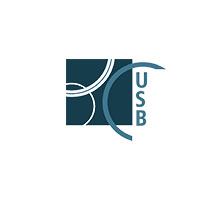Joy, Aprem P.  ORCID: 0000-0001-8589-1313
(2025).
Dynamics and Signatures of an Emergent Gauge Field.
PhD thesis, Universität zu Köln.
ORCID: 0000-0001-8589-1313
(2025).
Dynamics and Signatures of an Emergent Gauge Field.
PhD thesis, Universität zu Köln.

|
PDF
PhD_thesis_Joy.pdf - Accepted Version Download (15MB) |
Abstract
One of the most profound predictions of modern condensed matter physics is that gauge theories may emerge naturally in the low-energy description of certain solid state systems. This is in stark contrast with particle physics, where gauge theories have to be postulated. Emergent gauge theories often bring with them quasiparticles that carry fractions of a fundamental quantum number, holding the potential to revolutionize quantum technologies. The paradigmatic Kitaev model, an exactly solvable quantum spin liquid, realizes an emergent static Z2 gauge field and itinerant Majorana fermions coupled to it. Remarkably, there is a large class of materials that have shown significant promise for realizing this exotic phase of matter. Despite tremendous experimental efforts, a conclusive proof of emergent gauge fields and fractionalized excitations of the Kitaev spin liquid has remained elusive. Any material realizations of this model inevitably contain interactions that break the integrability of the model, and make the gauge fields dynamical. Understanding the properties this dynamical emergent gauge field is crucial for predicting its observable signatures in real materials. In this thesis, we develop a comprehensive theory of dynamical gauge fields in the Kitaev spin liquid, weakly perturbed away from its integrable limit. We focus on the dynamical properties of the fundamental gauge excitation - the vison, dressed by a cloud of Majorana fermions. Through a controlled perturbation theory, we calculate the dispersion of a single vison, induced by an off-diagonal exchange term and an external magnetic field h. Our findings reveal that the sign of the Kitaev interaction has a profound influence on the dynamical and topological properties of visons. While they can move efficiently and coherently in the ferromagnetic Kitaev model, their motion in an antiferromagnetic (AFM) Kitaev model is driven by the an incoherent, Majorana-assisted hopping. Remarkably, in the presence of an external magnetic field, visons of the AFM Kitaev model become topological, predicting a novel contribution to the thermal Hall effect. The massless Majorana fermions scatter from the vison’s gauge flux in a highly singular manner. Employing a modified Boltzmann formalism to capture this behavior, we show that it leads to a universal mobility in the low-temperature (T) limit, μ(T) = 6ℏv_m (k_B T)^2 , where v_m is the velocity of Majorana fermions. Motivated by the layered three-dimensional (3D) structure of candidate materials, we investigate the gauge field dynamics in weakly coupled multilayer Kitaev spin liquids. The interplay of novel conservation laws and robust topological constraints prevents single vison motion, leading instead to a variety of dynamic vison-pairs. The conservation laws put strong constraints on the motion of these excitations. Depending on the stacking pattern, inter-layer pairs may exhibit a fully two-dimensional (2D) motion within the layers, or a highly restricted one-dimensional mobility. Intra-layer pairs can, however, move across layers, with the direction of motion determined by the stacking pattern. Furthermore, we show how the anisotropy of Kitaev couplings strongly influences the coherence of interlayer tunnelling. In the final part, we focus on two experimental signatures of mobile visons: Raman spectroscopy and the thermal Hall effect. Using an effective two-particle model of visons, we calculate the low-energy Raman response of visons in a generic ferromagnetic Kitaev spin liquid. Our results reveal distinct signatures of anyonic statistics in the continuum response and sharp peaks associated with anyon-bound states. Notably, these sharp peaks exhibit a strong sensitivity to the chirality of Raman light, a feature observed in several experiments. Finally, we provide a detailed calculation of the thermal Hall effect resulting from dynamical visons in the antiferromagnetic Kitaev model, discussing its implications for experimental detection.
| Item Type: | Thesis (PhD thesis) | ||||||||
| Creators: |
|
||||||||
| URN: | urn:nbn:de:hbz:38-786658 | ||||||||
| Date: | 24 July 2025 | ||||||||
| Language: | English | ||||||||
| Faculty: | Faculty of Mathematics and Natural Sciences | ||||||||
| Divisions: | Faculty of Mathematics and Natural Sciences > Department of Physics > Institute for Theoretical Physics | ||||||||
| Subjects: | Physics | ||||||||
| Uncontrolled Keywords: |
|
||||||||
| Date of oral exam: | 13 December 2024 | ||||||||
| Referee: |
|
||||||||
| Refereed: | Yes | ||||||||
| URI: | http://kups.ub.uni-koeln.de/id/eprint/78665 |
Downloads
Downloads per month over past year
Export
Actions (login required)
 |
View Item |
